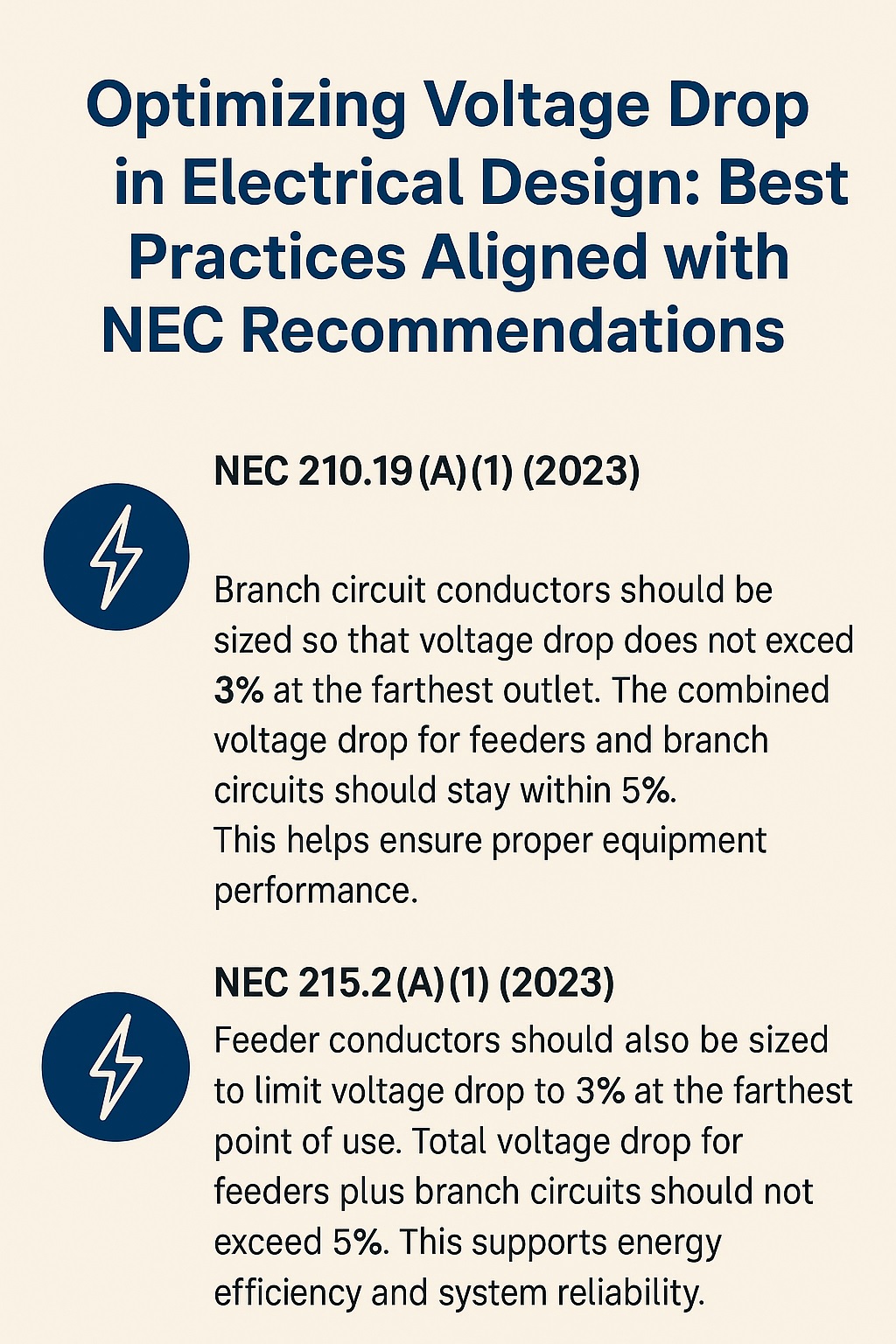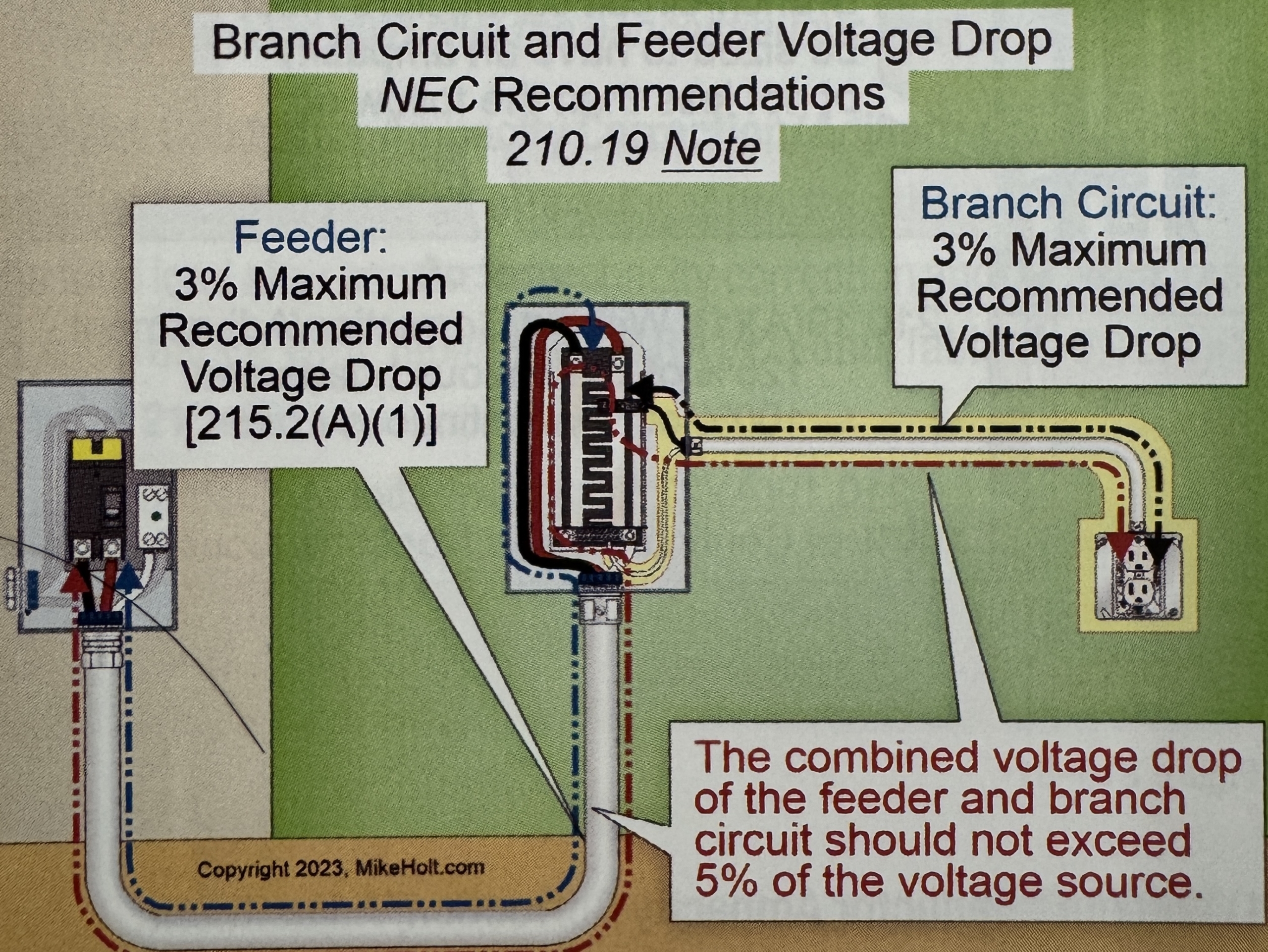
In modern electrical design, accuracy and efficiency are not optional—they’re essential. One of the most critical design parameters that directly impacts performance, safety, and code compliance is voltage drop.
-
What Is Voltage Drop?
Voltage drop is the loss of electrical potential that occurs when current flows through conductors with resistance. While some voltage drop is expected, excessive drop can cause:
- Equipment malfunction or premature failure
- Overheating of wiring systems
- Operational disruptions in critical loads
- Higher energy costs due to inefficiency
-
NEC 2023 Guidance on Voltage Drop
210.19(A):
-
Branch circuit conductors must be properly sized for ampacity.
-
NEC recommends limiting voltage drop to 3% for branch circuits.
-
Total voltage drop (feeder + branch) should not exceed 5% for efficient operation. These are recommendations, not mandatory code requirements, but they are widely adopted as best practice in professional electrical design.
215.2(A) :
-
Feeder conductors should be sized to keep the voltage drop at or below 3%.
-
The total voltage drop for both feeders and branch circuits should not exceed 5%.
-
Core Formulas: Get It Right from the Start:
- Three-Phase Voltage Drop with Parallel Runs

- Single-Phase Voltage Drop with Parallel Runs

Where:
-
L = One-way conductor length (feet)
-
I = Load current (amperes)
-
R = Conductor resistance (Ω/kft)
-
V= System voltage (line-to-line or line-to-neutral)
-
N= Number of parallel runs



